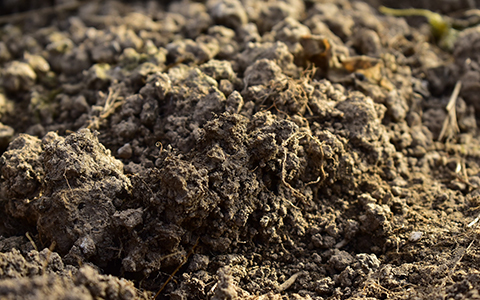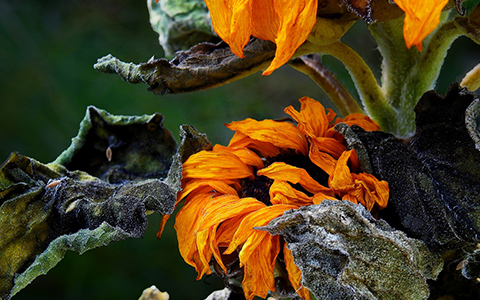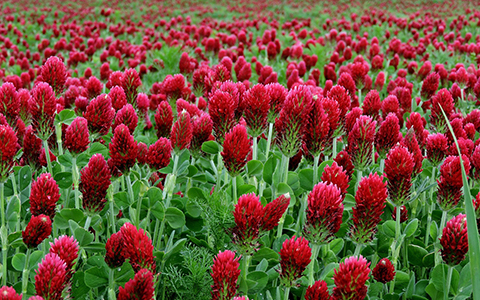
Tired of pooling water and dying plants, shrubs, and trees on your property? Understanding what well-drained soil is and the crucial role it plays in keeping your landscape alive will help you take action to correct poor soil drainage.
72tree.com gathered the following information about what well-drained soil is, why it is essential to plant life, and what you can do to improve your soil’s drainage.
Well-Drained Soil Defined
Well-drained soil allows water to move through it quickly and not pool. Standing water or saturated soil deprives roots of oxygen and can lead to root rot, disease, and decline (ironically) from hydraulic failure in the plant’s vascular system. Some plants, shrubs, and tree species are adapted to tolerate saturated conditions longer than others but will eventually suffer a similar fate.
Poor Soil Drainage Symptoms
Besides pooling water and soil erosion, plants growing in poorly-drained soil suffer from a lack of oxygen, resulting in root death and the plant’s rapid decline. Other indicators include:
• Stunted or slow growth with yellowing leaves
• Leaf scorch or leaf burn
• Edema (spots and blisters) may appear on stems and leaves
• The plant’s crown may quickly wither and rot

Note: Edema is a plant disorder caused by roots absorbing more water than the leaves can transpire (a common problem resulting from poor soil drainage). This excess water ruptures cells and appears as water-soaked patches turning corky and unsightly.
When soils are improperly managed, they can become compacted. This condition can occur during and after construction. Foot and vehicular traffic also compresses the soil pores and limits the oxygen and water that would otherwise move through the soil.
How Do I Know if My Soil is Well-Drained
Besides watching for pooling water and other symptoms, you can test and improve your soil by doing the following:
1 – Dig a hole about 12 inches wide and 12 inches deep
2 – Fill the hole with water
3 – After it completely drains, refill it with water and mark the time
4 – Note how long the water takes to drain
The water level in soil with excellent drainage should drop 1 to 2 inches per hour. Any longer, and you should take steps to improve the soil.
How to Improve Soil Drainage
Soil is composed of sand, silt, and clay particles varying in size. Sand has the largest particle size, and clay has the smallest. When soil contains large sand proportions, it has more pore space and is more sharply drained (similar to a sandy beach). Soil with high clay content has significantly less pore space. Reduced pore space slows water drainage and causes the soil to hold water for longer periods. Consider the following soil structure improvement methods:
Amend the Soil with Compost – Add organic matter to improve drainage in poorly drained soil. Organic matter, like compost, improves soil structure by increasing soil aggregation (soil aggregates are groups of soil particles). The space between these aggregates creates the space required for holding and exchanging air and water.
Spread compost 3 inches thick over the soil surface and work it into the top 10 inches of soil with a shovel, garden fork, or tillage.
Tip: Using a rototiller too frequently breaks down soil aggregates, defeating your soil improvement efforts.
Plant Cover Crops – Cover crops can help significantly improve soil drainage by increasing organic matter, and their roots help break apart or expand compacted soil. Some popular cover crop plant species include:

• Alfalfa (Medicago sativa)
• Buckwheat (Fagopyrum esculentum)
• Oat (Avena sativa)
• Winter Rye (Secale cereale)
• Crimson Clover (Trifolium incarnatum)
• Mustard (Brassica napus)
Cover crops are sometimes called “green manure” or “living mulch.” These species can add nitrogen to your soil, improve drainage, and boost fertility (without applying chemical fertilizers).
Aerate the Soil – Aerating can help relieve soil compaction. A core aerator removes soil plugs, leaving holes to loosen the soil, improving drainage, and getting air to roots.
Add Earthworms – Earthworms naturally and quickly improve soil pore size, water infiltration rate, water content, and water-holding capacity. Their burrowing tends to reach over 3 feet in depth, breaking up hardpans and promoting deep soil structure and aggregation.
Note: Soil with healthy earthworm populations drains up to 10 times faster than soil without them.
Well-Drained Soil
In this article, you discovered information defining well-drained soil, why it is essential to plant life, and how you can reverse poor soil drainage.
Recognizing when your soil is not draining properly will help you take prompt action to correct it and keep your plants, shrubs, and trees alive and thriving.
Your misunderstanding of soil drainage can lead to hydraulic failure in your landscape’s plant life, leaving you with diseased, declining, or dead plants, shrubs, and trees.
Sources:
agebb.missouri.edu/agforest/archives/v10n2/gh14.htm
missouribotanicalgarden.org/gardens-gardening/your-garden/help-for-the-home-gardener/advice-tips-resources/pests-and-problems/environmental/overwatering
hortnews.extension.iastate.edu/testing-and-improving-soil-drainage
dpi.nsw.gov.au/agriculture/soils/guides/soil-biology/earthworms
No comments:
Post a Comment
Note: Only a member of this blog may post a comment.